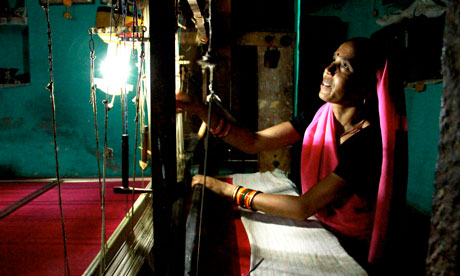by Harsh Thapar
More than 50% of the world is urbanised today, however 70 % of India still lives in its villages. While working in London, on sustainable solutions for buildings, I cant help remember my 12th class history lesson on Gandhiji’s view of these villages being the building blocks of India. Today we are seeing large rates of migration from villages due to poor quality life and lack of opportunities. The cities are controlling the resources and the money. Rapid industrialisation has helped progress, but not offered sustainable solutions. A balanced and sustainable life for all India needs a special place for its villages.
Being an architect, I find a relevance in the question of rural housing. The approach of the Indian Government is to provide a basic support of max Rs 75,000 to 80,000 for a pukka house. Is a pukka house the best we can aim for? How does this pukka house fit and add to the village life as a whole. It may be unfruitful to just plan houses that neglect the aspiration for a greater balance. Gandhi ji’s emphasis on a self sufficient and independent village community, interestingly, becomes ever more relevant when applied in today’s context of sustainability. A village in which residents have their employment, food, education and health needs fulfilled locally must be more resource efficient and less polluting.
We still don’t have running water and proper sanitation in our villages. There is only a few hours of electricity if there is any at all. I do accept that a lot have been achieved since Independence, just that I can’t see where we are going. I do believe knowing where we want to go, is as important as knowing where we are.
By self sufficiency in villages, I am not implying a total isolation of the villages from the town. Modern Information technology can put villages in a position where they can benefit from cutting edge thinking that is available in the cities the world over. What we need is rapid experimentation with technologies available and interpreting them into locally applicable solutions. In my experience the solution changes depending on the view one takes to a problem. Till now we have seen village life to be low cost, low-tech and low resource based. Villages in fact have more natural resources per person as compared to cities. A simple example, they have more solar energy, wind energy, land and biomass resources per person than the towns. I do wonder how the future Indian Village might change if we change our point of view to see it being high tech, yet low cost , resource abundant yet sustainable.
While travelling in India this year,I came across an experiment coming out of the spiritual and physical culture inspired by philosophy of Sri Aurobindo Ghosh in Puducherry. Sri Aurobindo Society, has adopted 7 villages under its Sarvam village development project. This project is pioneering village development in education, social welfare, public media and architecture. Its working to take a more complete and integral view to encompass more than usual three but 5 areas of sustainable life: the economic, the human, the social, the environmental and the evolutionary.The results are visible in the high turnout at their schools. Such experiments need to be discussed, supported and intensified to have any noticeable effect on the Indian Sub continent and its 6,38,645 villages.
Technology today is cutting right through the geographical and economic divides and is offering possibilities for exploration. A UN report in 2010 suggested that there are more mobile phones in India than working toilets. Indians are connecting and even banking through mobile technology. Indian villagers need access to not just elementary education but information and tools at par with pace of the world. That wouldn’t directly change the toilet situation but will change the world view Indian Villagers have today, which will indirectly change their vision. Ofcourse, all the Western solutions, may not be right for us, however we must benefit from understanding them, to develop more suitable ones for our context. For example Fast mobile internet access to all the villagers with every house having a computing device is not an unreasonable idea today. Thanks to the economical Aakash tablet computer developed by IIT Bombay.
I chose to imagine future Indian villages to be: self -sufficient if not resource surplus. National energy grid independent. Sustainably powered with Sun , wind and biomass. Vibrant economy supporting new solutions like pv, waste disposal, sanitation, health. Green local transport systems. Quality housing. Informed. Educated. Globally Connected. Spiritually rich. Culturally proud . Progressive. Better quality life than towns.
Ofcourse we are still stuck at questions of providing the basics but perhaps a loftier vision is needed to inspire us. Instead of an effort to just survive, we must see people from villages become more informed, creative and eventually more productive. The relationship of the people to their villages, the villages to the towns and the town to the cities need to be considered creatively in context of the new emerging green economy. It may not be prudent or possible to plan them in any rigid manner but a bolder approach may cut across the mental barriers that hold us back. While practical solutions are needed, what is greatly needed is a courageous new vision of sustainable future for the Indian villages.
Author : Harsh Thapar, is an architect and environmental designer, trained in Delhi and London. Presently he works at Foster + Partners London and is involved with design of sustainable solutions .

